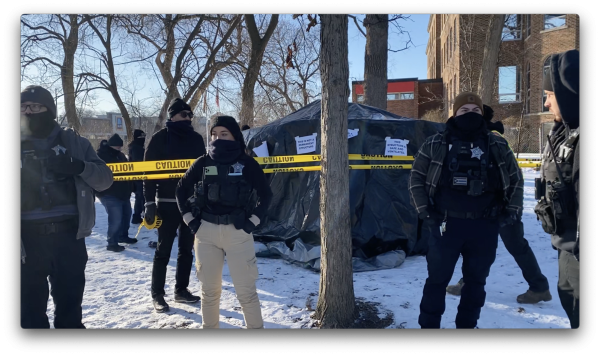Two Departments, Now One
More in News
The proposed name for the recently merged departments of literacy education and educational leadership and development was accepted by President Sharon Hahs and went into effect Feb. 23, Provost Richard Helldobler said in a targeted announcement.
The department of literacy, leadership and development was formed in the Fall of 2015 and is a part of the Daniel L. Goodwin College of Education.
According to Dr. Howard Bultinck, chair of the department of literacy, leadership and development and the former chair of the department of educational leadership and development, the merger had been planned for some time. Administrators had been looking at what departments would make sense working together—which could save the university money through consolidation.
“Leadership and the development of human potential are the key ingredients that work with both (departments),” Bultinck said. He said that the smaller size of the department of literacy and education made it easier to combine with the department of leadership and development.
Bultinck said this raised a new dilemma: The new department of literacy, leadership and development deals with all of the work associated with the previous two departments. But now, there is just one department chair and only one office manager.
The increase in workload per person aside, Bultinck said a benefit to the merger—other than saving university money—is that a greater number of professors can collaborate to help students when confronted with an issue.
For students in the department pursuing one of the graduate programs there will be no noticeable difference. Their classes and curriculum are completely unchanged.
“What counts is what goes on in the classroom,” Bultinck said. “The rest is just a bunch of stuff. The job of administrators is to leverage programming and support professors and instructors teaching the classes so they can maximize their talents and abilities to work with our students to maximize their talents and abilities.”
Dr. JoAnne Vazzano, the former department chair of literacy education—now an associate professor for the department of literacy, leadership and development—is the new director of the Literacy Center at NEIU.
Vazzano said this was one of her passions that she had not been able to fully pursue as a department chair.
“Vazzano expressed a desire to go back to the Literacy center—and Bultinck is a former superintendent, school administrator and comes from an extensive background in administration,” said Dr. Maureen Gillette, dean of the Daniel Goodwin College of Education. “I think it was really assuring that two people got to do something that they loved.”
Dr. April Nauman, who filled the role of program coordinator and junior chair of the department of literacy, leadership and development said the merger has so far been a fruitful collaboration between the former two departments.
“I’m delighted that we merged,” said Nauman, who touched on what Bultinck mentioned when referring to the common ground the two departments shared. “Our (literacy education) students are studying to be reading specialists and part of that world is leadership. So here we joined with leadership and I feel the collaboration has been really fruitful so far and will only continue to grow.”
Vazzano reaffirmed Bultinck’s notion that the decision to merge had been considered for quite some time since last year and was not directly linked to the state’s current budget crisis.
Nauman elaborated further and said, “It is part of the several year trend to reduce funding to higher education in Illinois, and that’s all on the governor and the House.”
She referred to Gov. Bruce Rauner’s proposed 30 percent budget cut to higher education.
“Last year the College of Education got the largest percentage of budget cuts of any academic units at the university,” Gillette said. “We had to cut over $700,000 from our budget.”
However Bultinck, Vazzano and Nauman all said they feel the increase in faculty collaboration due to the merging will serve well in the future.
“The value comes from interdisciplinary approaches when you meet with colleagues that are slightly different disciplines,” Vazzano said. “But we’re still in the business of educating students to do what they want to do in their life.”
Your donation will support the student journalists of Northeastern Illinois University's The Independent, either in writers' payment, additional supplies and other items of note. Your contribution will allow us to purchase additional equipment for writers/photographers/illustrators and cover our annual website hosting costs.
Laura Rojas








